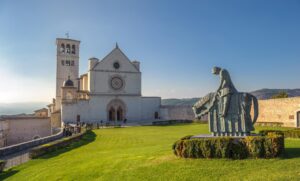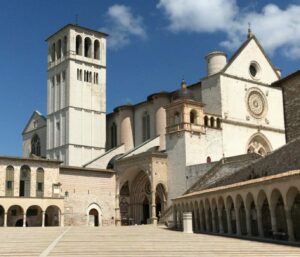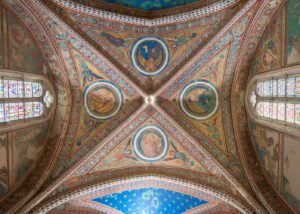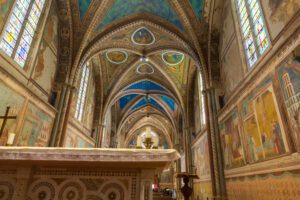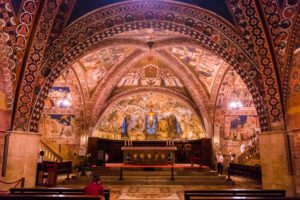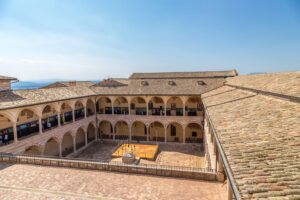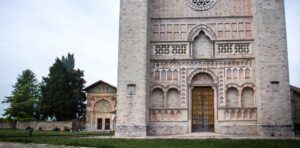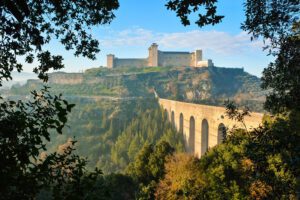Saint Francis’ Legacy
When in 1226 Saint Francis of Assisi died at the age of 44, he was already very famous, and his movement – a true religious Order since 1223 – was followed by thousands of people. They immediately felt they had to build a basilica that may keep his remains, show his importance for all the faithful of that era, and preserve his memory. So, on July 15, 1228, Papa Gregorio IX – who had personally been a friend of Francis – declared him a Saint, and at the same time laid the first stone of the basilica on the hill just off the city of Assisi, northward. No more than seven years later, in 1235, the building made of two superimposed churches and a big belfry had already been completed, basically as we still see them nowadays. The Basilica of Saint Francis is undoubtedly one of the most famous and most frequently visited churches all over the world. It unites, in fact, a deep religious significance in connection with Saint Francis, and an exceptional value in itself, both historical and artistic.
The Artistic Beauty of the Basilica
Contemporaries perceived that the spiritual strength and freshness Saint Francis had given the Church had to be expressed by using the new architectural style created in the 12th century for the great French cathedrals: Gothic. The Basilica of Saint Francis in Assisi, especially the Upper Basilica, is in fact among the very first Gothic buildings in Italy. Its glass windows, decorated with episodes from the Bible and Church history in the apse and transect, are moreover the oldest in Italy; they were made by craftsmen who had been hired from France. Anyway, however great the architectural beauty and importance of the building may be, what makes the Basilica of Saint Francis a marvel in universal art is the paintings that embellish it.
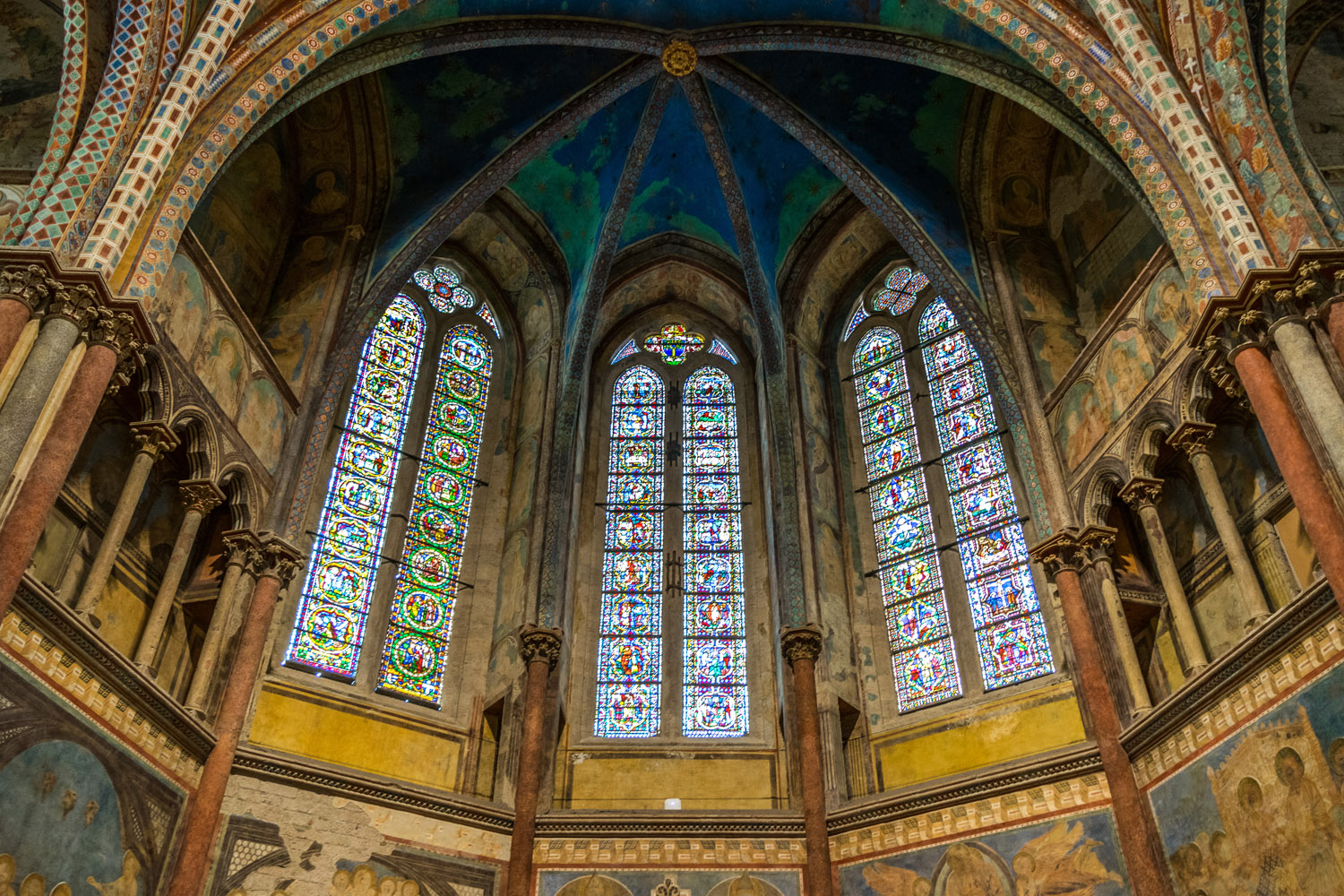
The Great Artists in the Basilica of Saint Francis
In a time span of few decades, between the second half of the 13th century and the early 14th century, in the art laboratory in Assisi the greatest stars of Italian painting were at work. Since they had to engage with the message of Saint Francis, they understood that, in order to express his spirituality, a new language in art must be developed. Among such artists there emerged Cimabue, Torriti, Lorenzetti, Martini – but surely, the first name anybody will link with Assisi is that of Giotto di Bondone, from Florence. According to tradition, he was the one who, in the late 13th century, painted the most important cycle: the stories from Saint Francis’ life on the nave walls of the Upper Basilica. These would provide the visual rendition par excellence of the life of Francis, and at the same time mark the definitive sunset of Byzantine art in the West vis-a-vis the new Italian language of art, that would further flourish during the Renaissance. It should also be remembered that Giotto would come back to Assisi in the early 14th century in order to fresco the Chapel of Mary Magdalene in the Lower Basilica. These paintings, ranked among his masterpieces, have been recently restored so as to regain their native beauty. Obviously, these works left in Assisi by Giotto and other masters influenced the local painters in depth – that is, that group of artists who would give rise to the so-called “Umbrian School.”
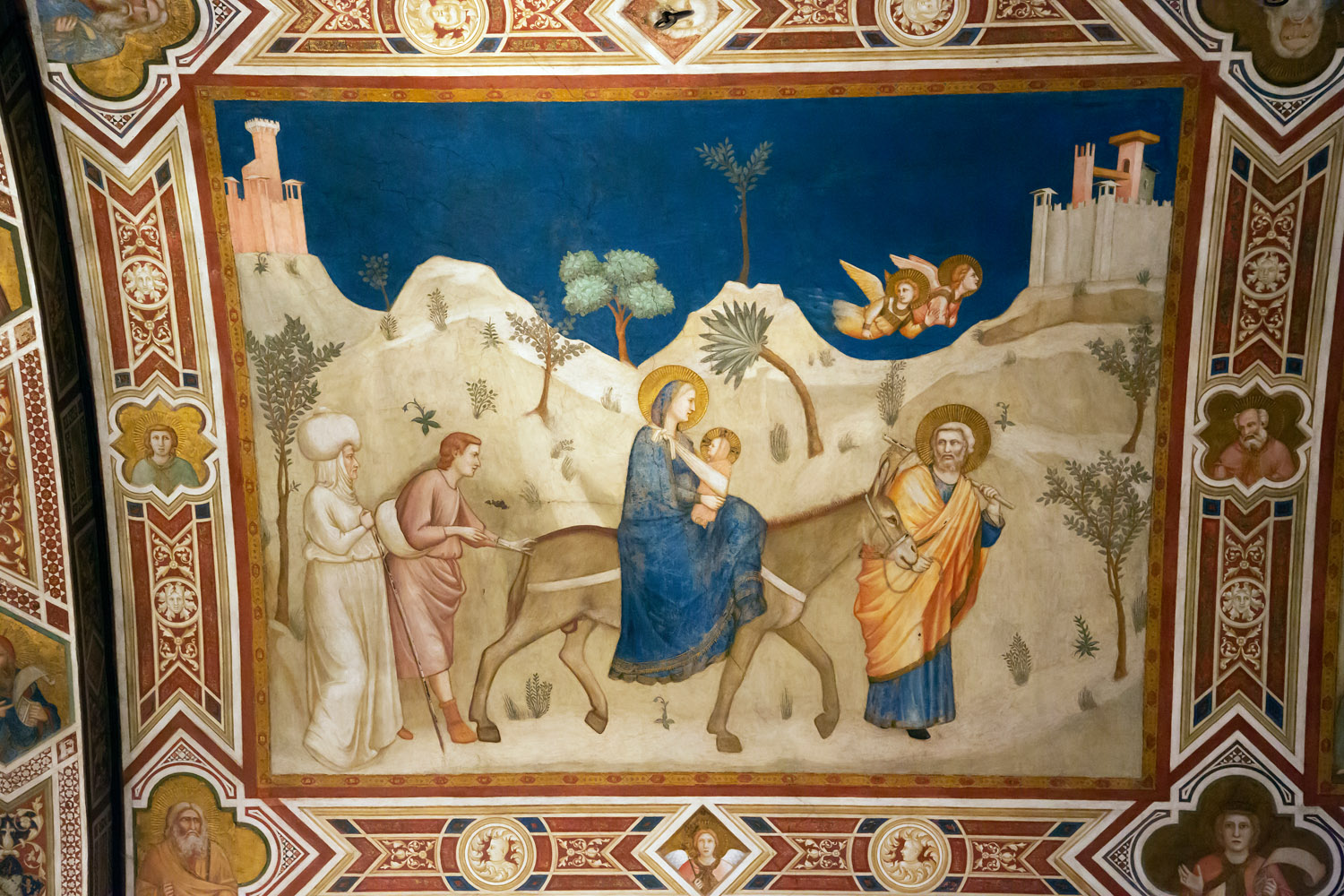
The Upper Basilica: Building Utopia
Dealing with the unique art heritage in the Basilica of Saint Francis, a mention must be made of the restoration of the frescoes in the three rib vaults in the ceiling of the Upper Basilica, which had collapsed because of anearthquake in 1997. After the walls of the collapsed sections had been rebuilt, the Italian restorers succeeded in repositioning a great part of the fragments of the frescoes, that had been retrieved from the ruins. It was like putting together a huge puzzle: the enterprise was made possible by then new digital technologies, here used for the sake of Medieval art. The operation was called “Cantiere dell’Utopia” – Building Utopia – because, when the project was first suggested, many people thought it would prove infeasible.
A Route inside the Basilica
The visit to the Basilica of Saint Francis starts from the Lower Basilica: it also is completely embellished with paintings, though it does not receive much natural light. At mid-length in the nave, you will find the steps leading downward to the crypt, that was created in the 19th century in order to let the pilgrims have a look at the tomb of Saint Francis. At the end of the transept, wonderfully adorned with frescoes by Pietro Lorenzetti and other followers of Giotto, you will then find the stairs leading to the terrace of the cloister of the Sacred Convent, home to a community of friars, which rises just behind the basilica. From the terrace, you will walk up to the Upper Basilica. There, the multicolor light that filters through the illustrated glass of the big Gothic windows, together with the chromatic play from the frescoes that cover both walls and ceiling, create a fascinating environment, which better than any other may visually express the main line in Saint Francis’ Canticle: “All praise be yours, my Lord, through all that you have made. . .”
